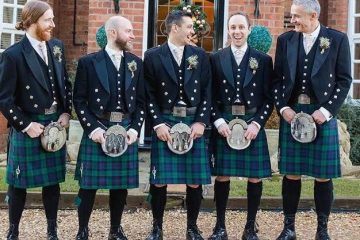The allure of Norse jewelry transcends time, captivating enthusiasts with its intricate designs and profound symbolism. From the rugged landscapes of Scandinavia emerged artisans who transformed raw materials into masterpieces that told stories of gods, heroes, and the cosmos. This journey through time explores the evolution of Norse jewelry, shedding light on its historical significance and enduring appeal.
Early Beginnings: The Roots of Norse Ornamentation
Long before the Viking Age, the Norse people adorned themselves with simple yet meaningful ornaments. Early pieces were crafted from bones, stones, and wood, reflecting a deep connection with nature. These materials were readily available and held spiritual significance, serving not just as decoration but as talismans offering protection or blessings.
- Bone and Stone Carvings: Early Norse artisans skillfully carved amulets depicting animals or symbols believed to possess magical properties.
- Natural Motifs: Designs often featured elements like the sun, moon, and animals, symbolizing harmony with the natural world.
The Viking Age: A Flourish of Craftsmanship
The Viking Age (circa 793–1066 AD) marked a golden era for Norse jewelry. As seafaring explorers and traders, the Vikings encountered diverse cultures, absorbing influences that enriched their craftsmanship.
Materials and Techniques
- Metals: Gold, silver, bronze, and iron became prevalent, sourced from both local mines and trade.
- Techniques: Intricate methods like filigree (twisted threads of metal), granulation (tiny metal beads), and repoussé (hammered designs) showcased advanced metallurgical skills.
Symbolism and Identity
Jewelry was more than adornment; it was a language conveying status, allegiance, and spirituality.
- Thor’s Hammer (Mjölnir): Worn for protection and as a declaration of faith in the old gods amidst the spread of Christianity.
- Valknut and Runes: Symbols associated with Odin and mystical knowledge adorned pendants and rings.
- Brooches and Cloak Pins: Functional pieces that also displayed wealth and intricate artistry.
Cultural Interactions
Trade routes introduced new motifs and techniques.
- Celtic Influences: Knotwork and interlacing patterns began to appear, merging Norse and Celtic artistry.
- Eastern Inspiration: Encounters with Byzantine and Islamic cultures introduced filigree and enameling techniques.
The Role of Jewelry in Norse Society
Jewelry held significant social and economic roles.
- Status Symbols: Elaborate pieces indicated wealth and power, often buried with their owners for use in the afterlife.
- Trade and Currency: Silver arm rings and ingots functioned as currency, easily divided and traded.
- Legal and Ceremonial Uses: Oaths were sworn upon rings, underscoring their sacred importance.
Decline and Transformation
The end of the Viking Age saw shifts in Norse jewelry.
- Christianization: Crosses and Christian iconography began to replace pagan symbols.
- Feudal Influences: Societal changes led to alterations in fashion and the types of jewelry worn.
Revival and Modern Interpretations
Interest in Norse heritage resurged in the 19th and 20th centuries, spurred by archaeological discoveries and a fascination with Viking mythology.
Contemporary Designs
Modern artisans draw inspiration from ancient motifs, blending traditional symbols with current fashion trends.
- Sterling Silver Pieces: Popular for their timeless appeal and connection to historical designs.
- Runic Inscriptions: Personalized messages and names rendered in runes offer a bespoke touch.
- Mythological Themes: Gods, dragons, and mythical beasts feature prominently, connecting wearers to legendary narratives.
Cultural Significance Today
Wearing Norse jewelry has become a means of expressing identity, spirituality, and appreciation for ancestral roots.
- Symbol of Strength: Mjölnir pendants are embraced as emblems of resilience and protection.
- Connection to Heritage: Individuals of Scandinavian descent, and admirers alike, wear these pieces to honor the Norse legacy.
- Fashion Statement: The bold designs complement modern styles, making a distinctive statement.
Preservation and Exploration
Museums and exhibitions worldwide showcase Norse jewelry, allowing people to appreciate the craftsmanship firsthand.
- Archaeological Discoveries: Ongoing excavations continue to unveil new pieces, enriching our understanding of Norse culture.
- Academic Research: Scholars study these artifacts to decipher historical contexts and societal structures.
Embracing the Legacy
The evolution of Norse jewelry reflects a journey of cultural expression, technological advancement, and artistic mastery. Its timeless appeal lies in the intricate designs that carry stories from a distant past into the present day.
For those captivated by these legendary motifs, incorporating Norse-inspired pieces into everyday life is a way to keep the spirit of the Vikings alive. Whether through a pendant engraved with ancient symbols or a ring crafted in traditional styles, these ornaments serve as a bridge between eras.
Discovering authentic and thoughtfully crafted Norse jewelry has become more accessible. Exploring collections that honor this rich heritage can be a rewarding experience. NorseSpirit offers a curated selection of jewelry that captures the essence of Norse artistry, allowing enthusiasts to find pieces that resonate with their personal journey.
Conclusion
From humble beginnings to sophisticated artistry, Norse jewelry has traversed a path reflecting the history and soul of a people. Its evolution tells a story of exploration, adaptation, and enduring symbolism. As we adorn ourselves with these timeless pieces, we partake in a tradition that spans centuries, celebrating the intricate dance between past and present.



